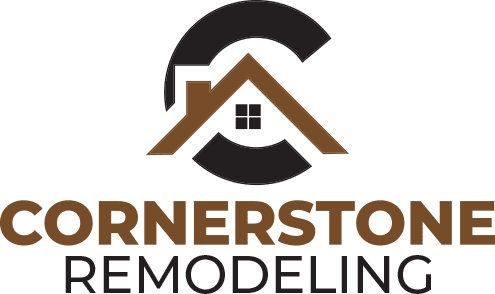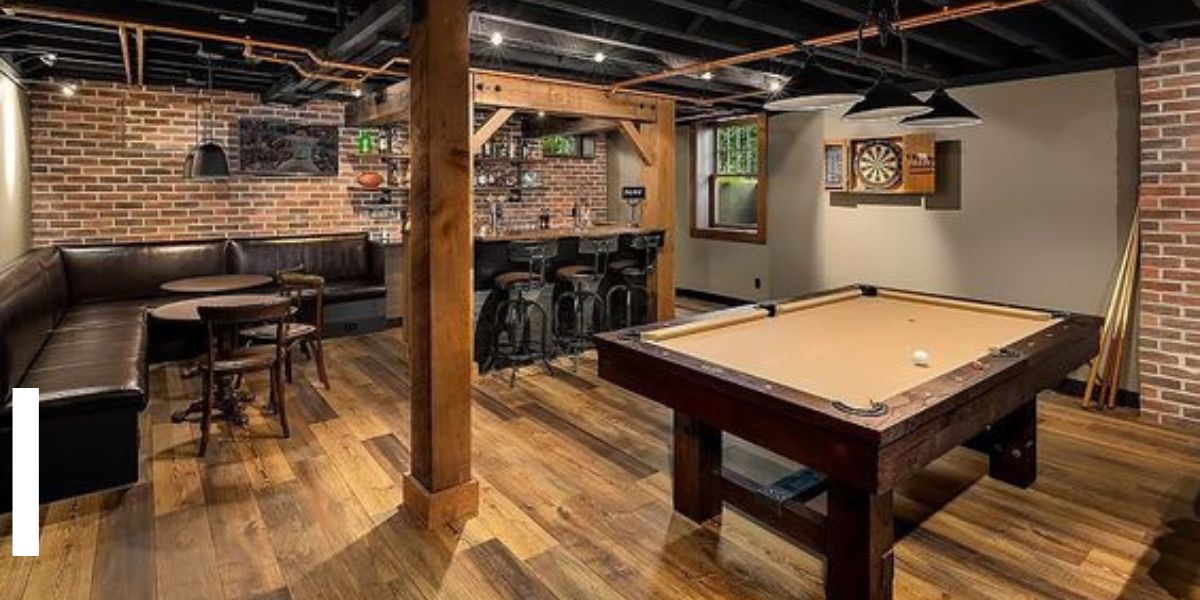Looking for ways to achieve a seamless and visually appealing kitchen tile to wood floor transition? You’re in the right place! In this article, we’ll explore a plethora of creative ideas to bridge the gap between your kitchen tile and wood flooring. From elegant T-molding solutions to innovative herringbone patterns, get ready to transform your home with expert tips and inspiring examples.
Let’s dive in and discover the perfect blend of style and functionality in your kitchen remodeling transition!
1.

Achieving this look is a straightforward process. If your wood flooring already has an end cap, remove it. Once the primary tile field is in place, form a border using the glass mosaic tile, selecting a width that suits your preferences. Measure the gap between the hardwood and mosaic edges, and then either trim the existing end-cap board using a table saw to fit the space or consider purchasing a new one if needed.
Image by Next Luxury
2.
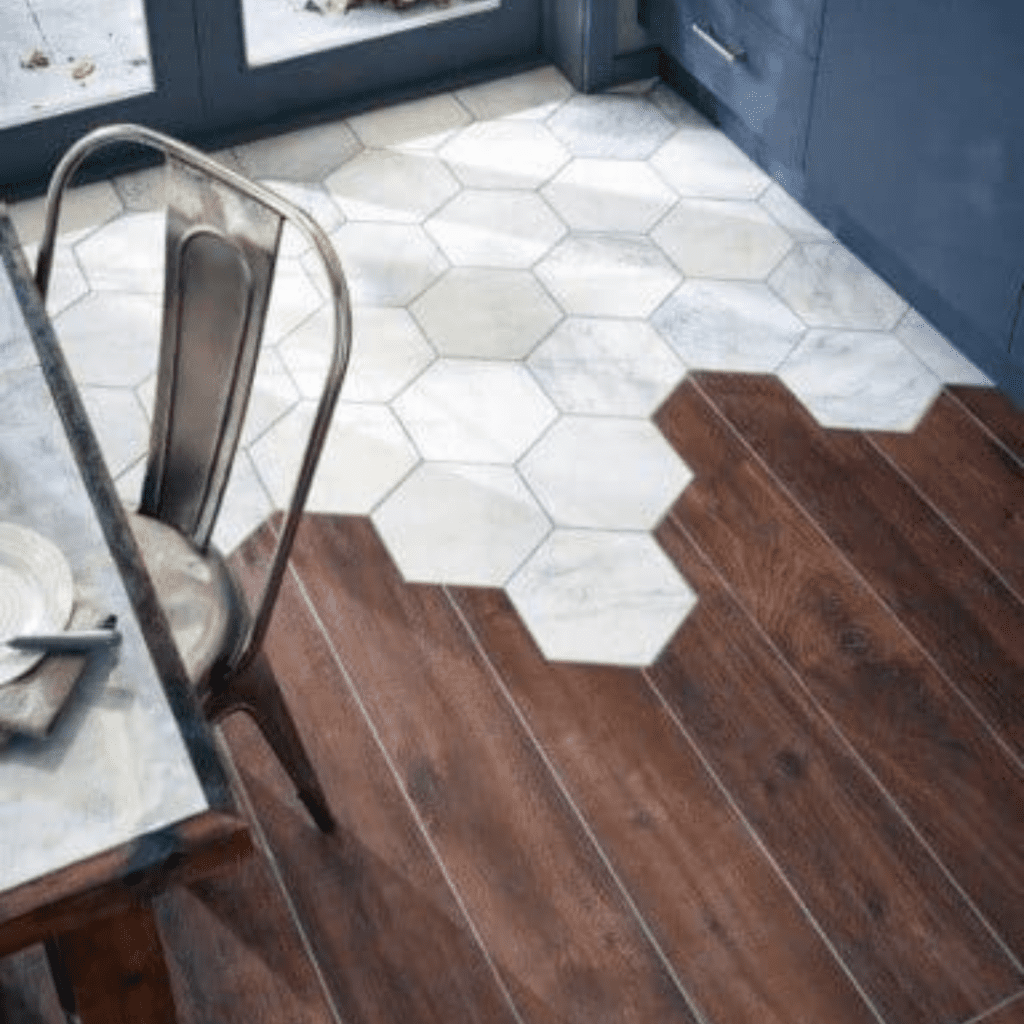
The transition from tile to wood flooring in this home exudes a delightful charm without compromising on organization. Large hexagon tiles are artfully integrated into the wood floor, creating a seamless and cohesive look throughout the hallway. In the main space, a wood transition gracefully overlays the tiles, resulting in a clean and polished threshold.
Image by Next Luxury
3.
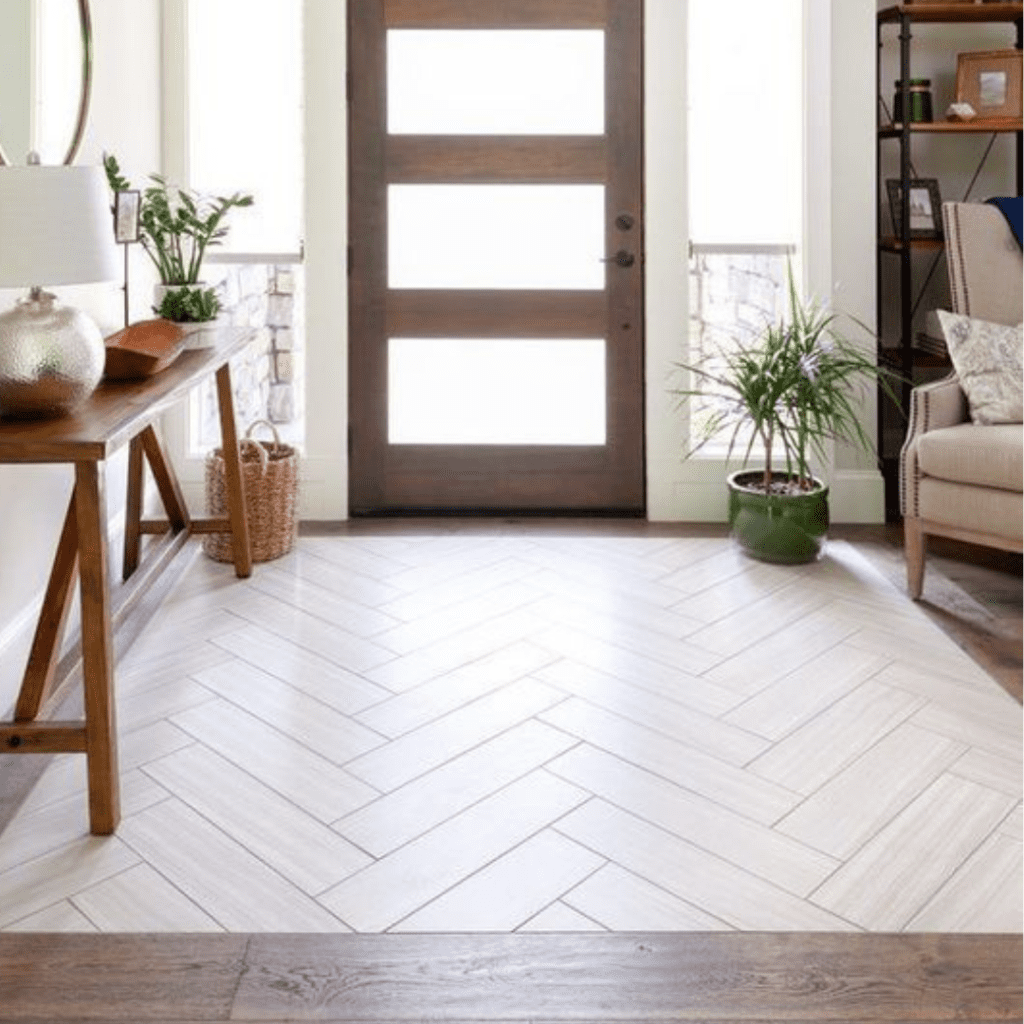
The entryway floors boast neutral chevron-clad tiles, while rich-colored laminate flooring surrounds the area, beautifully creating a bright and striking contrast.
Image by Shelterness
4.
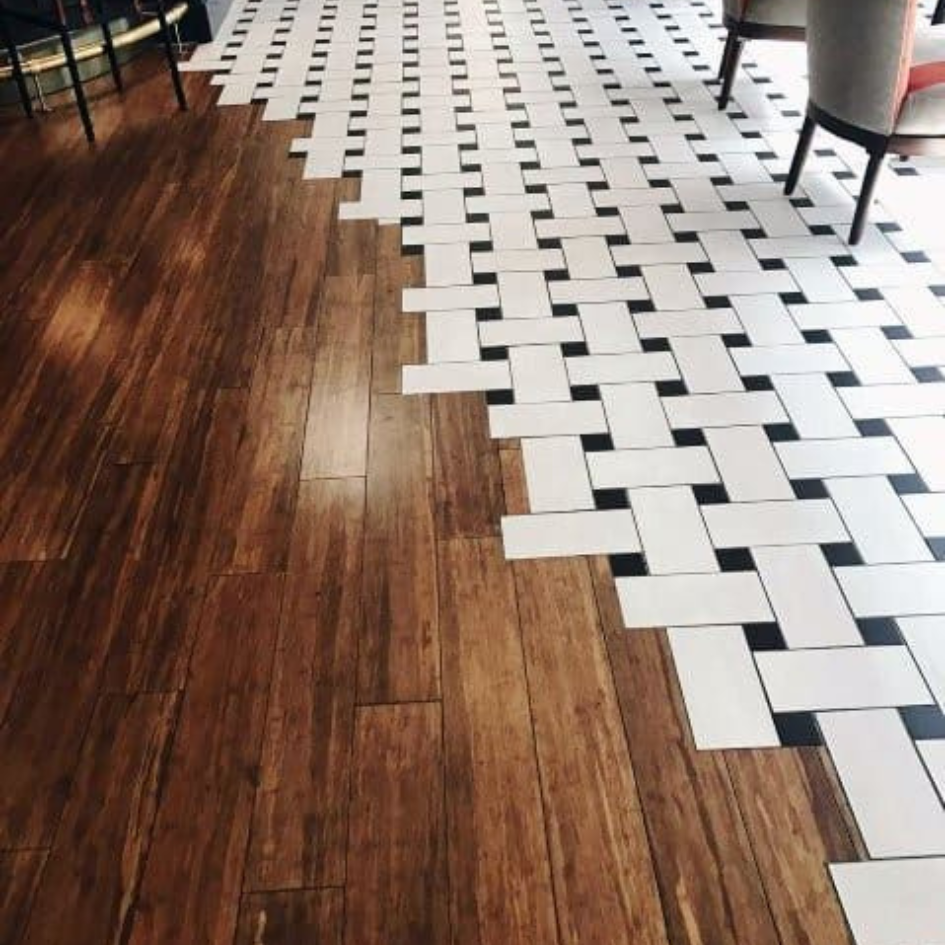
Incorporating wood into a black and white tile design can introduce a captivating and contemporary touch. The juxtaposition of the warm and natural tones of wood against the starkness of black and white tiles creates an eye-catching contrast that adds depth and visual interest to the space. Whether it’s in the form of a wooden border, a herringbone pattern, or a carefully placed medallion, this fusion of materials offers a timeless and stylish kitchen tile to wood floor transition.
Image by Next Luxury
5.
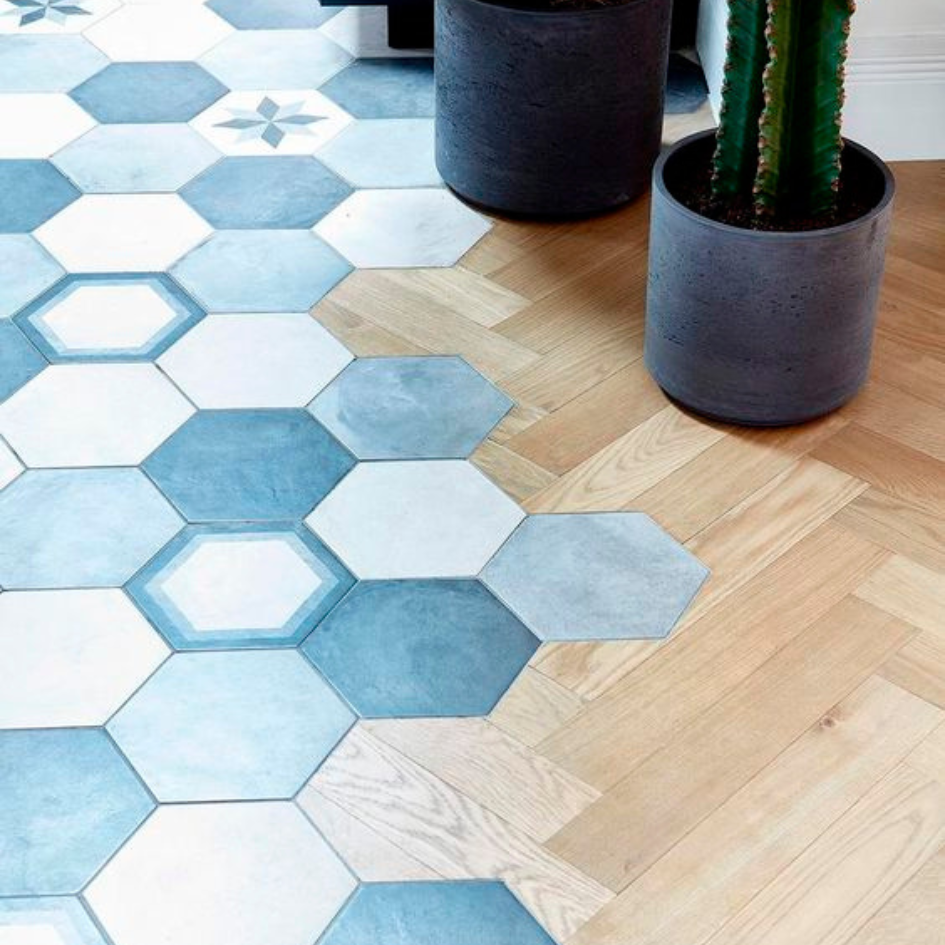
Combining blue and white tiles with light wood floors can infuse your space with a fresh and coastal-inspired ambiance. The serene and airy atmosphere created by the blue and white tiles complements the warmth and natural appeal of the light wood, producing a harmonious and inviting setting. Whether it’s in a bathroom, kitchen, or any living area, this delightful combination of materials offers a seamless and visually appealing transition that evokes a sense of tranquility and elegance.
Image by Isotoria by Jordan Andrews
6.

Featuring a walnut engineered flooring with ceramic tile, creating a seamless and beautifully integrated look. Their skillful craftsmanship ensures a harmonious blend between the two materials, resulting in a stunning and sophisticated flooring solution for your space.
Image by Antares Wood Floors Ltd
7.
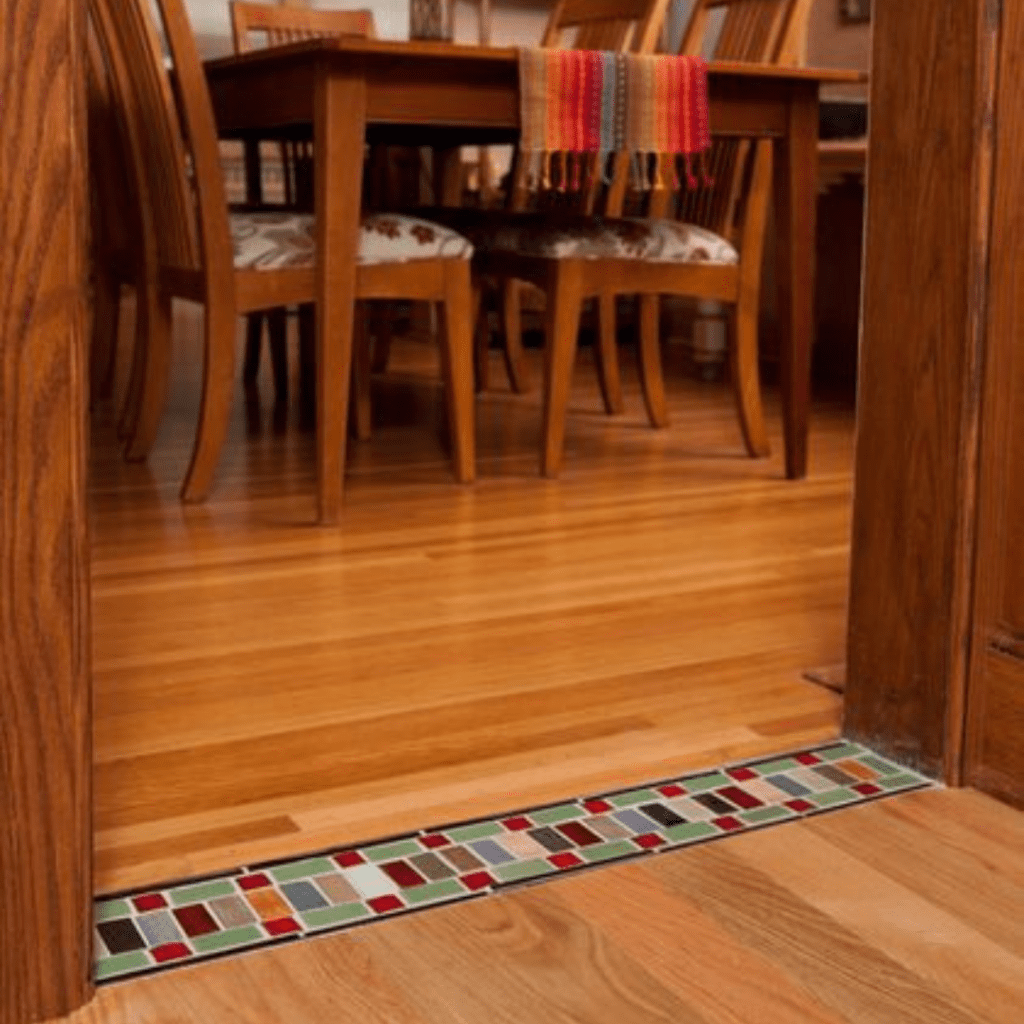
Mosaic tiles offer a versatile option to accentuate and distinguish between two patterns of laminate flooring. They can be effectively utilized to create a visually appealing separation that adds a unique touch to your overall flooring design.
Image by digsdigs.com
8.
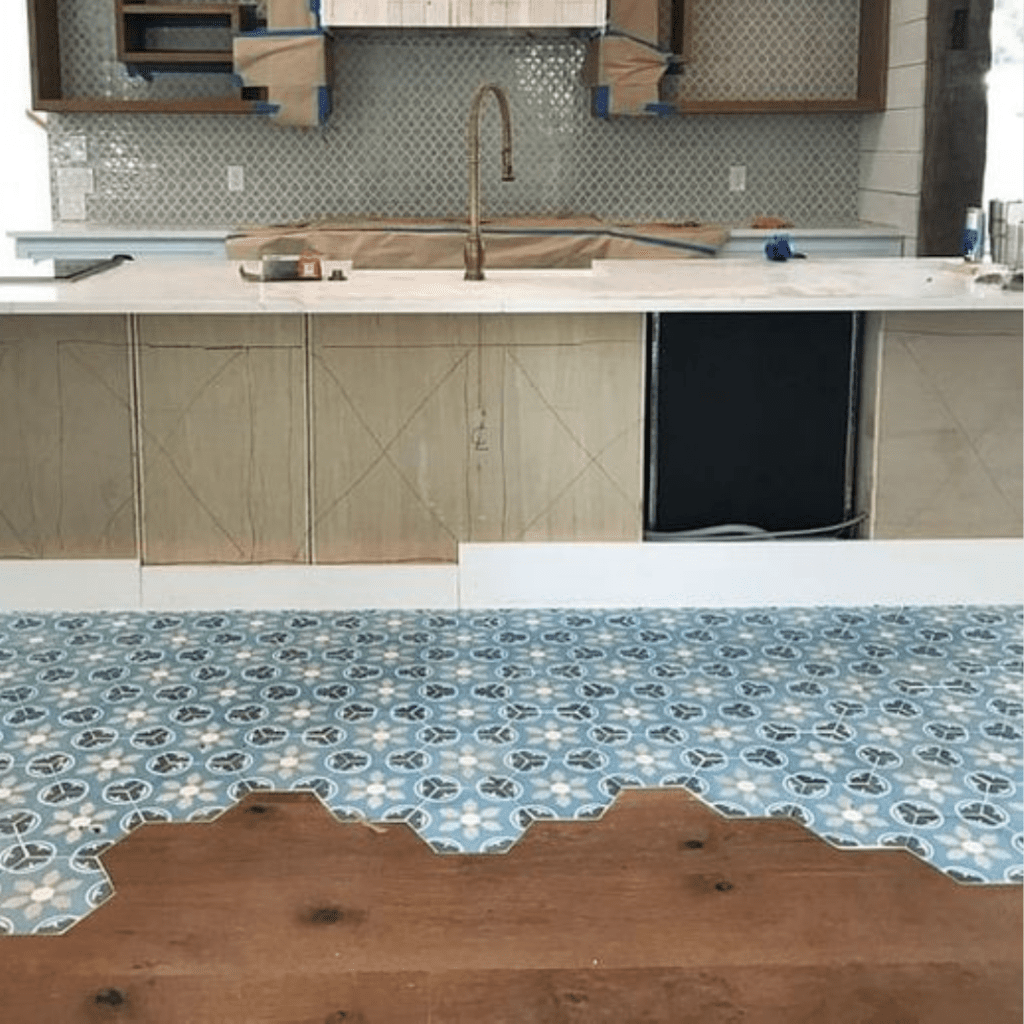
Transitioning from wood to decorative blue and white flower-looking tile flooring can be an inspired design choice. The combination of the warm and natural wood with the intricate and vibrant tile pattern creates a captivating contrast that infuses the space with charm and character. This seamless transition blends the elegance of wood with the artistic appeal of the decorative tile, resulting in a visually stunning and aesthetically pleasing flooring arrangement.
Image by Houszed
9.
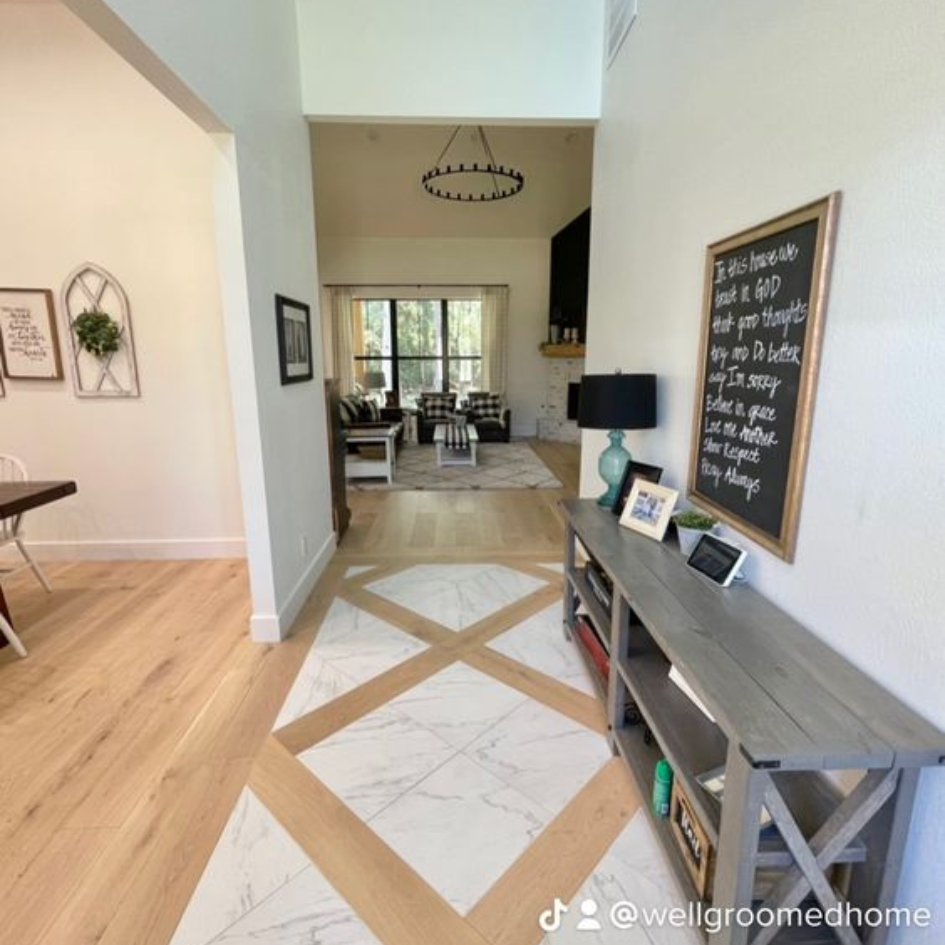
A flooring design that features wood with an intricate tile in the middle brings a perfect balance of natural warmth and artistic flair to any space. The combination of the rich wood tones with the eye-catching tile pattern creates a focal point that adds elegance and sophistication to the room. This unique and seamless integration of materials offers a stunning flooring solution that complements various interior styles and delights the senses with its beauty and craftsmanship.
Image by Well-Groomed Home
10.

Darker hardwood floors paired with sandy-colored tiling create a captivating and harmonious contrast. The rich tones of the hardwood beautifully complement the light and earthy hues of the tile, offering a warm and inviting ambiance to the space. This thoughtful combination brings depth and character to the flooring, making it an excellent choice for creating a stylish and timeless design.
Image by San Diego Marble Tile
FAQ
How can I achieve a seamless transition between tile and wood?
Consider using transition strips, complementary colors, patterns, and gradual blending techniques for a harmonious transition.
Can I combine different tile and wood types?
Yes, coordinating colors and textures of tile and wood can create a stunning transition. Examples include warm neutrals with light wood or contemporary contrasts.
What are some creative tile to wood transition ideas?
Explore using medallions, contrasting grout colors, herringbone patterns, or gradual shading techniques.
Final Thoughts
Revamp your home with our professional remodeling services, offering seamless integration of wood and tile flooring. Discover the perfect combination of colors and textures to create a stunning and inviting space. Contact us now to embark on a transformation that elevates the beauty and functionality of your living areas.
